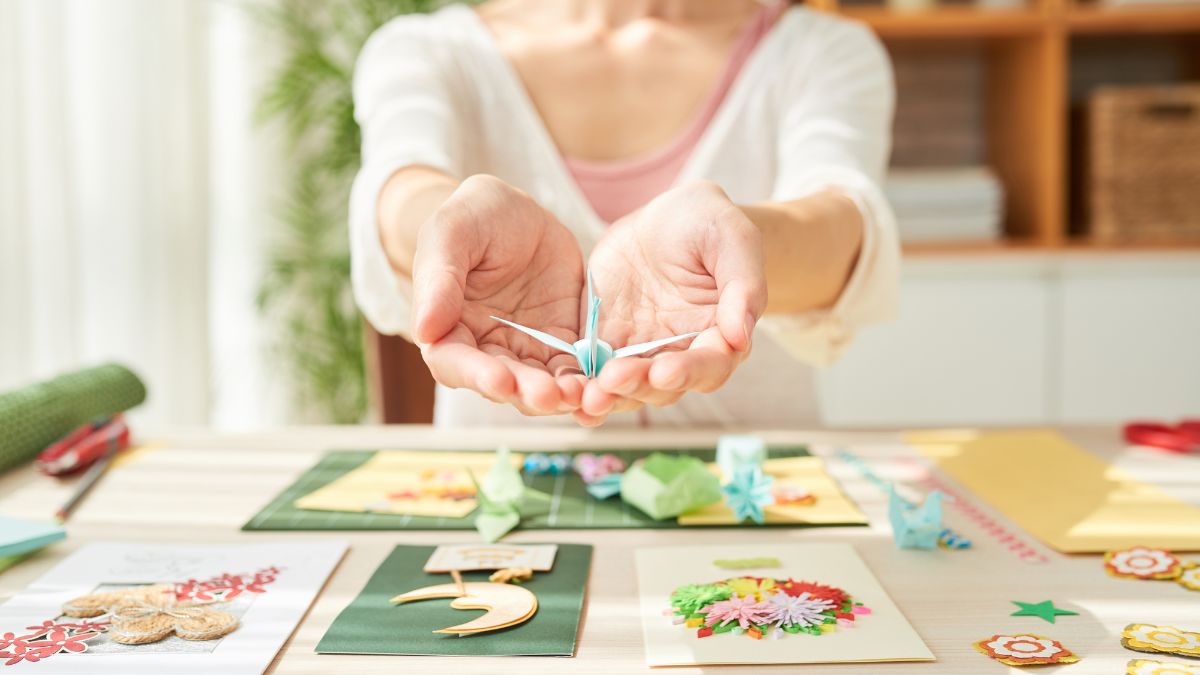Imagine a signal light guiding your child through everyday challenges. That’s what happens in Applied Behavior Analysis (ABA) when something called an SD in ABA therapy is introduced. The term may sound technical, yet it’s simply a cue that tells a child, “This is the right time to act.” Therapists use these cues to teach new skills, from brushing teeth to raising a hand in class. When the child responds correctly, positive reinforcement follows—praise, a smile, or another reward. Over time, these signals shape confidence and independence. Curious how it works in practice? Let’s take a closer look at the power of discriminative stimuli, how they guide behavior, and why they’re so important in ABA therapy.
Defining Discriminative Stimulus (SD)
A discriminative stimulus (often shortened to SD) is an environmental cue that sets the stage for behavior. In everyday terms, it tells the child, “If you do this now, something good will likely happen.”
The idea comes from operant conditioning, where behavior changes depending on what follows it. If a child claps when the therapist claps and earns praise, clapping in response becomes more likely next time.
Think of an SD as
- A cue: A signal that says a behavior has a good chance of being reinforced.
- A guide: It narrows focus and helps the child know what to do.
- A learning tool: It turns everyday actions into opportunities for growth.
How SDs Work in ABA Therapy
In sessions, therapists present an SD right before expecting a behavior. This makes the link between cue and response clear.
For example:
- A therapist holds up a picture of a toothbrush. The child picks up their toothbrush. Praise follows.
- The therapist says, “Point to the cat.” The child points and receives a sticker.
By repeating this pairing, the child learns that certain signals connect to specific behaviors, making them more likely to act independently later.
Examples of SDs in Everyday Life
Discriminative stimuli aren’t only for therapy. They’re all around us. Consider these familiar cues:
- Green light at an intersection: Tells drivers to move forward.
- Phone ringtone: Signals that someone is calling.
- Doorbell sound: Means someone is at the door.
Each of these cues prompts a predictable behavior. That same principle applies in ABA therapy.
Types of Discriminative Stimuli
Different children respond to different cues. ABA therapy adapts by using multiple forms:
- Verbal instructions: “Sit down,” “Show me the ball.”
- Visual prompts: Pictures, written words, or objects.
- Environmental cues: Lights turning on, materials placed on a desk.
Breaking skills down into small, clear signals keeps learning achievable and less overwhelming.
SD in ABA Therapy vs. Conditioned Stimulus
People often confuse a discriminative stimulus (SD) with a conditioned stimulus (CS). They aren’t the same.
| Feature | Discriminative Stimulus (SD) | Conditioned Stimulus (CS) |
| Definition | Cue that signals reinforcement is available if the behavior happens | A neutral cue paired with another stimulus until it triggers a response |
| Purpose | Guides when to act for the best chance of reinforcement | Creates an association by repetition |
| Example | Teacher says, “Line up.” → student lines up, gets praise | Bell rings before food repeatedly → bell alone makes child expect food |
This difference matters: in ABA, an SD doesn’t create reflexes. Instead, it helps learners know when it’s “time to try.”
Why SDs Matter in ABA Therapy
SDs are powerful because they make expectations crystal clear. That clarity builds consistency, reduces confusion, and boosts learning speed.
Benefits include:
- Precision: Targets one skill at a time.
- Predictability: Signals create structure, helping children know what comes next.
- Confidence: Clear cues reduce frustration and increase independence.
- Generalization: Once learned, behaviors spread into daily life—brushing teeth at home, lining up at school.
A 2020 study in the Journal of Applied Behavior Analysis found that consistent use of discriminative stimuli improved skill acquisition rates in children with autism by up to 30%. This shows how cues streamline progress.
How Does Sensory Processing Affect Everyday Experiences?
Imagine hearing the hum of a refrigerator as loudly as a car engine. Or feeling a clothing tag as if it were sandpaper. That’s the sensory world for many autistic individuals.
Some key examples include:
- Clothing textures—Seams and tags can feel unbearable.
- Sounds—Toilets flushing or blenders buzzing may trigger panic.
- Touch—A hug may feel invasive rather than comforting.
- Lighting—Flickering bulbs can cause agitation or headaches.
- Smells—Strong odors may overwhelm the senses instantly.
The Autism Sensory Processing Study (2020) found that over 80% of autistic children show sensory differences across multiple senses.
What’s the solution? Sensory tools like noise-canceling headphones, fidget toys, or weighted blankets help regulate experiences. Environments can also adapt—dim lights, quiet corners, or fragrance-free zones.
The outcome? Greater comfort and confidence in facing the world each day.
How Does Autism Affect Social Interaction and Community Involvement?
Birthday parties, playgrounds, or even grocery stores can feel tricky. Not because autistic individuals lack interest, but because social rules often feel unclear.
Support here matters. Strategies that build social understanding include:
- Social skills training—teaching turn-taking and eye contact in structured ways.
- Role-playing or video modeling – Practicing scenarios before they happen in real life.
- Gradual exposure—Slowly increasing time in group settings to build comfort.
When supported, autistic individuals thrive socially on their own terms. Many enjoy meaningful friendships, contribute to community activities, and show resilience in spaces that once felt intimidating.
A 2022 Autism in Adulthood study even noted that peer mentoring programs boosted confidence and long-term community participation.

Strategies That Make SDs and Reinforcement Work
Discriminative stimuli (SDs) and reinforcement are most effective when applied with intention and consistency. An SD acts like a green light—signaling the best time to respond—while reinforcement strengthens that response so it happens more often in the future. When used together, they create a system that guides learning and builds independence.
- Cue for action: An SD lets the learner know exactly when to act. A teacher raising a hand, for instance, signals students to raise theirs too.
- Clear expectations: Without an SD, learners may not know which behavior will be rewarded. The cue eliminates confusion.
- Gradual shaping: Introduce skills in small steps, pairing each success with reinforcement to build momentum.
- Positive reinforcement: Add something rewarding, like praise or tokens, to encourage the behavior to repeat.
- Negative reinforcement: Remove something unpleasant, such as turning off a loud sound, to strengthen desired actions.
- Fading prompts: Slowly reduce supports so the learner can respond independently.
- Individualization: Match SDs and reinforcers to the learner’s style—visual for some, verbal for others.
When therapists apply these strategies, learning becomes structured, motivating, and achievable step by step.
Real-Life Examples of SDs and Reinforcement in Action
Discriminative stimuli (SDs) and reinforcement don’t just exist in theory—they show up in real-life situations that guide learning every day. An SD signals when a behavior is most likely to be rewarded, while reinforcement strengthens that behavior so it sticks. Together, they provide a roadmap for growth, from simple routines to complex social skills.
- Learning social skills: A peer says, “Hi.” That greeting acts as an SD for the child to wave or respond, with praise reinforcing the exchange.
- Developing routines: A picture card showing “Snack Time” signals it’s time to prepare food. Following through earns reinforcement, making the routine easier over time.
- Academic tasks: When the teacher writes “Math” on the board, students open their math books. The cue sets expectations, while correct responses get reinforced.
- Prompting action: SDs like verbal cues or visual prompts give clarity on what’s expected in the moment.
- Building associations: Over time, learners connect SDs with the likelihood of earning reinforcement.
- Tailored supports: SDs and reinforcers should match the learner’s preferences—tokens, praise, or activities that motivate them.
Applied consistently, SDs and reinforcement make learning structured, rewarding, and easier to generalize across settings.
Why Personalization Matters in ABA
No two learners are alike, which makes individualized planning a cornerstone of ABA therapy. Both discriminative stimuli (SDs) and reinforcement need to be carefully matched to each person’s strengths, preferences, and goals. A signal that motivates one child may mean little to another, and the same is true for rewards. By tailoring strategies, therapists create learning experiences that feel meaningful and engaging.
- Custom cues: An SD should be clear and relevant to the learner—visual cards for visual thinkers or verbal prompts for children who respond best to spoken directions.
- Assessment-driven choices: Direct observation, preference assessments, and conversations with caregivers help identify which signals and reinforcers are most effective.
- Meaningful reinforcers: Some children work hard for praise, while others prefer tokens, toys, or access to activities. Matching rewards keeps motivation high.
- Consistency across settings: Coordinating with teachers, therapists, and caregivers ensures that SDs and reinforcers are applied in the same way at home, school, and therapy sessions.
- Collaboration for success: Sharing insights among professionals and families creates a holistic plan, making progress smoother and more consistent.
When ABA strategies are personalized, children experience learning that respects their individuality and supports steady growth.
Common Challenges and Solutions
Like any tool, SDs can face hurdles. Here’s how therapists navigate them:
- Overdependence: If a child only acts when they see the exact SD, therapists introduce variations. Example: different pictures of toothbrushes for brushing skills.
- Generalization difficulties: Children may use a skill in therapy but not at home. Solution: practice across settings.
- Individual variability: Each child responds differently. Ongoing assessment ensures the right fit.
These adjustments help keep progress on track.
Research Spotlight
Evidence backs the use of discriminative stimuli. A 2018 review in Behavior Analysis in Practice highlighted that consistent SD use significantly boosted both communication and daily living skills.
Another study in 2021 with preschoolers showed that pairing SDs with reinforcement cut learning time for new tasks nearly in half compared to sessions without SDs.
Such findings confirm what many therapists see every day: SDs make learning clearer, faster, and more effective.
Benefits Beyond Therapy
While designed for ABA sessions, the concept of SD stretches into everyday family life:
- Posting a checklist on the fridge cues kids to pack their lunch.
- A bedtime routine chart signals when it’s time to brush, read, and sleep.
- A bell at dinner signals that it’s time to gather at the table.
Parents often find these natural SDs simplify routines, making transitions smoother.

FAQs
1. How is an SD different from a simple instruction?
An SD isn’t just any instruction. It specifically signals that reinforcement is available if the child responds correctly, which makes learning more effective.
2. Can an SD change over time?
Yes. Therapists often fade or modify cues once the child masters a skill. This ensures independence and prevents over-reliance on a single signal.
3. Do SDs only apply to children with autism?
Not at all. While heavily used in ABA therapy for autism, the principle applies to all learners, including adults acquiring new habits.
4. Can multiple SDs be used in one session?
Yes, but they’re introduced carefully. Therapists focus on one cue at a time before layering others to avoid confusion.
5. What happens if a child ignores an SD?
Therapists may add prompts, adjust reinforcement, or simplify the task. The key is ensuring the cue matches the child’s ability to respond.
Key Takeaways: Lighting the Path in ABA Therapy
Discriminative stimuli are simple yet powerful. At Shining Moments ABA, these cues act as signals that set the stage for success. Within ABA therapy, SDs guide children toward independence, reduce confusion, and help skills stick. When paired with positive reinforcement, SDs transform learning into a structured, rewarding journey. If you’re seeking support in Maryland, reach out to us at Shining Moments ABA—we’re here to walk with you every step of the way.
So, the next time you hear, “What is SD in ABA therapy?” you’ll know—it’s the cue that lights the path for meaningful growth.
More Like This Articles
 Shining Moments ABA Therapy
Shining Moments ABA Therapy
Shining Moments ABA Therapy
 Choosing the Right ABA Provider in Maryland and New Jersey
Choosing the Right ABA Provider in Maryland and New Jersey
Choosing the Right ABA Provider in Maryland and New Jersey
 The Benefits of ABA Therapy: From Communication to Social Skills
The Benefits of ABA Therapy: From Communication to Social Skills



